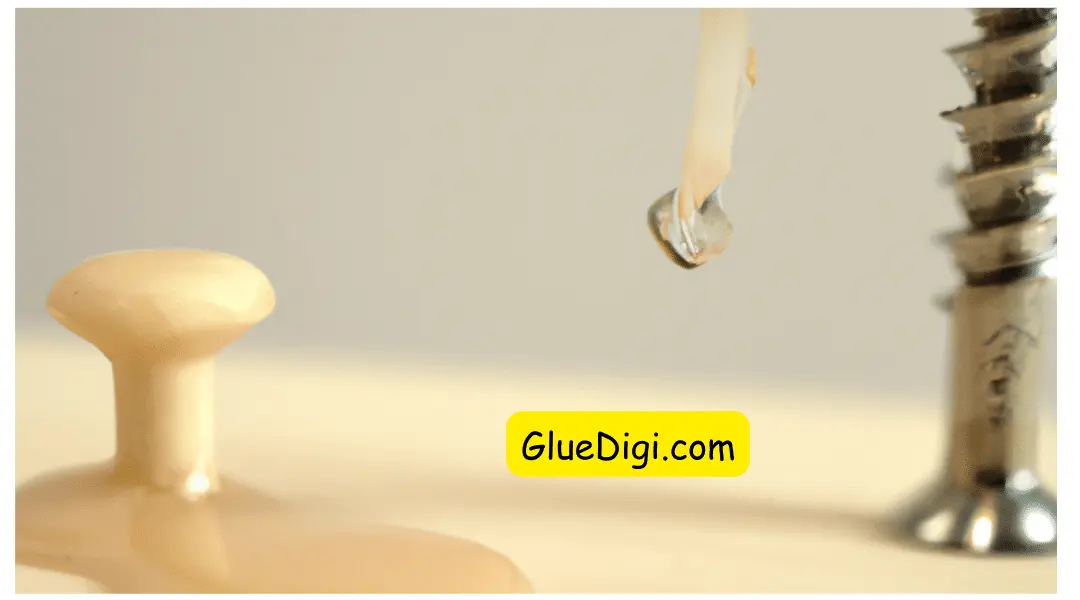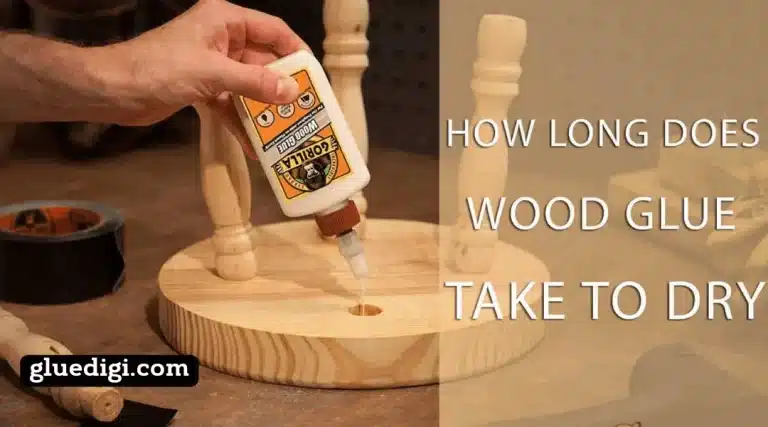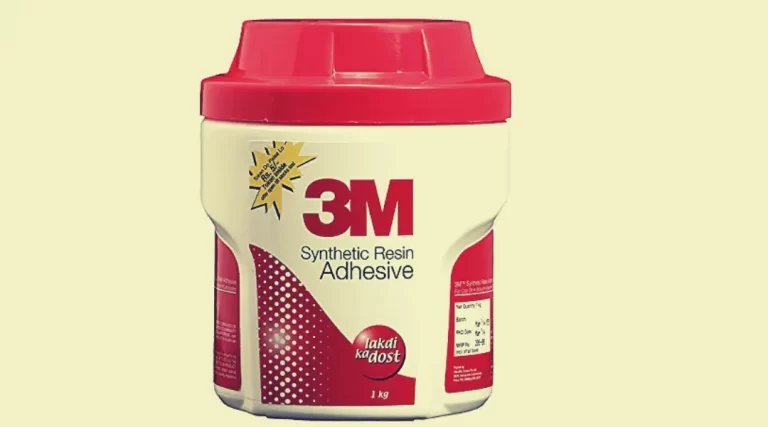Wood glue and screws are both common options used in woodworking projects to join pieces of wood together. While both have their benefits, it’s important to know the strengths and limitations of each in order to make an informed decision when choosing the right fastening method for your project. The question Is Wood Glue Stronger Than Screws? is a subject of debate among DIYers and professional woodworkers alike
On the other hand, screws are mechanical fasteners that provide a strong and secure connection between two pieces of wood. They can be easily removed or adjusted, making them an ideal choice for projects that may need to be disassembled or modified in the future. However, screws can split the wood or cause it to split over time, especially if they are over-tightened or not placed in the correct position.
In general, the why is wood glue so strong can be equal to or even stronger than that of a screw joint, depending on several factors such as the type of wood, the strength of the glue, and the manner in which the joint is made. It’s important to note that screws are better suited for heavy-duty applications, such as building a deck or attaching pieces of wood that will be subjected to significant stress, while glue is best for lighter-duty applications, such as attaching decorative trim or making small repairs. What Does Glue Smell Like?
What Is Wood Glue And What Are Its Benefits Over Screws

Wood glue, also known as carpenter’s glue or PVA glue. This is a type of adhesive made from a mixture of chemicals and resins. When applied to wood surfaces and allowed to dry, it creates a strong and flexible bond. This bond can withstand movement and pressure without breaking. Wood glue is commonly used in woodworking and carpentry projects, including furniture making, cabinetry, and flooring.
Benefits
One of the primary benefits of using wood glue over screws is its ability to create a seamless joint. Unlike screws, which can split the wood or leave visible holes, wood glue can be used to fill gaps and create a smooth surface. Additionally, wood glue is more flexible than screws, which can be an advantage when working with materials that may expand or contract with changes in temperature and humidity.
Another benefit of wood glue is that it is less likely to cause damage to the wood compared to screws. Screws can split the wood if not placed correctly, and over-tightening them can also cause damage. With wood glue, there is no need to drill pilot holes or worry about applying too much pressure, as the glue will spread evenly and form a strong bond without damaging the wood.
However, it’s important to note that while wood glue can be a strong and effective fastening method, it’s not always the best choice for all applications. In heavy-duty applications such as building a deck or attaching large pieces of wood that will be subjected to significant stress, screws are the preferred option. Screws provide a strong and secure connection that can withstand heavy loads and are better suited for applications where the joints will be subjected to significant stress.
The choice between using wood glue or screws depends on the specific requirements of your project. If an attractive and seamless finish is desired, wood glue may be the better option. However, if a strong and secure connection is required for heavy-duty applications, screws are the preferred choice.
The Difference Between Wood Glue And Screws
Wood glue and screws are two common methods used in woodworking and carpentry projects to join pieces of wood together. While both have their benefits, there are key differences between the two that can influence the decision of which one to use.
carpenter’s glue
Wood glue, also known as carpenter’s glue, is a type of adhesive made from a mixture of chemicals and resins. It creates a strong and flexible bond between two surfaces when applied and allowed to dry. Wood glue is often used to create a seamless joint and is best suited for applications where an attractive finish is desired.
- Screws, on the other hand, are mechanical fasteners that provide a strong and secure connection between two pieces of wood. They can be easily removed or adjusted, making them ideal for projects that may need to be disassembled or modified in the future. However, screws can split the wood or cause it to split over time, especially if they are over-tightened or not placed in the correct position.
- One of the key differences between wood glue and screws is the type of bond they provide. Wood glue forms a flexible bond that can withstand movement and pressure without breaking. Screws, on the other hand, provide a mechanical connection that can withstand heavy loads but may cause damage to the wood if not placed correctly.
- Another difference is the visibility of the fastener. Wood glue creates a seamless joint that is invisible, while screws leave visible holes in the wood. This can be an advantage when working on projects where a clean and attractive finish is desired, but can also be a disadvantage if the screws are unsightly or difficult to hide.
- At last, Is Wood Glue Stronger Than Screws? depends on the specific requirements of your project. Wood glue is the best suite for applications where a seamless and attractive finish. Understanding the differences between wood glue ensures that your woodworking projects are successful.
Why is wood glue so strong?
Why is wood glue so strong? Wood glue is a type of adhesive specifically designed for bonding wood surfaces together. Its strength primarily stems from its chemical composition and the way it interacts with wood fibers. Here are some key factors that contribute to the strength of wood glue:
Penetration
Wood glue has the ability to penetrate into the porous structure of wood. This allows it to create strong bonds by effectively spreading throughout the wood fibers and forming a strong bond over a large surface area.
Chemical bonding
Wood glue typically contains polymers, such as polyvinyl acetate (PVA) or aliphatic resin. When the glue is applied to wood surfaces, it undergoes a chemical reaction as it dries. The polymer molecules form strong bonds with the wood fibers, creating a durable and rigid connection.
Curing process
As wood glue dries, it undergoes a curing process, during which the water or solvent in the glue evaporates, leaving behind a solid adhesive layer. This process allows the glue to harden and develop its full strength over time.
Flexibility
While wood glue dries to a rigid state, it still retains some level of flexibility. This flexibility is essential for absorbing minor movements or changes in the wood due to temperature and humidity fluctuations without causing the bond to break.
Compatibility with wood
Wood glues are designed to work specifically with wood surfaces. They are formulated to bond well with the natural characteristics of wood, including its porosity and grain patterns, which enhance the overall bond strength.
Non-toxicity
Most wood glues are non-toxic and safe to use, making them suitable for various woodworking projects where a strong bond is required.
It’s important to follow the manufacturer’s instructions and allow the appropriate drying and curing time for the glue to achieve its maximum strength. Additionally, the strength of a wood glue bond can be affected by factors such as the quality of the wood, surface preparation, clamping pressure, and application technique. Proper surface preparation, clean and dry wood, and sufficient pressure during clamping will contribute to stronger and more reliable bonds.
How To Use Wood Glue For A Strong Bond
When wooden Glue is used correctly, it can provide a strong and flexible bond that will last for years. Here is a step-by-step guide on how to use wood glue for a strong bond:
Clean the surfaces
Before applying the glue, it is important to clean the surfaces to be joined. Any dirt, dust, or debris can weaken the bond, so make sure the surfaces are free of contaminants.
Apply the glue
Using a brush or a sponge, apply a thin and even layer of glue to one of the surfaces to be joined. Be careful not to use too much glue, as this can lead to excess squeeze-out and a weaker bond.
Assemble the pieces
Once the glue has been applied, carefully align the two pieces of wood and press them together. If the pieces are not properly aligned, the bond will be weakened.
Clamp the pieces
Clamping the pieces together while the glue dries is essential for a strong bond. Clamps provide even pressure and ensure that the pieces stay aligned while the glue sets.
Wait for the glue to dry
The drying time for wood glue can vary depending on the type of glue and the conditions, but most glues will be dry enough to remove the clamps after 4 to 24 hours.
Sand the surface
Once the glue has dried, the surface can be sanded to remove any excess glue or rough spots. Be careful not to sand too much, as this can weaken the bond.
Advantages And Disadvantages Of Using Screws
Screws are a commonly use fastener in woodworking and carpentry projects. They provide a strong and secure connection between two pieces of wood and are ideal for heavy-duty applications where a high degree of stability is required. However, there are also disadvantages to using screws, and it’s important to consider these before making a decision on which fastener to use.
Advantages of using screws include:
- Provide a Strong and secure connection.
- Easy to install.
- Adjustable easily.
- It is Cost-effective
Disadvantages of using screws include:
- Visible.
- Risk of splitting.
- Can cause damage.
Is Wood Glue Stronger Than Screws?
The answer to the question “Is wood glue stronger than screws?” is not a simple one. Both wood glue and screws have their own strengths and weaknesses, and the choice of which to use will depend on the specific needs of the project.
In terms of strength, screws provide a strong and secure connection that can withstand heavy loads. However, the strength of the bond can also depend on the type of screw and the quality of the wood. On the other hand, wood glue provides a flexible bond that can withstand changes in temperature and moisture levels, which can make it a better choice for certain applications.
When it comes to appearance, screws can leave visible holes in the wood, which can detract from the finished product. Wood glue, on the other hand, does not leave any visible evidence of the bond and can provide a seamless finish.
When To Use Wood Glue Instead Of Screws
Wood glue and screws are both commonly use in woodworking and carpentry projects, but they serve different purposes and have different strengths and weaknesses. Deciding when to use wood glue instead of screws depends on the specific needs of the project.
Here are some scenarios where wood glue may be a better option:
- Fine woodworking: For projects that require a seamless finish, such as furniture or cabinetry. Wood glue can provide a strong bond without leaving any visible evidence of the connection.
- Joints that need to expand and contract: Wood glue provides a flexible bond that can withstand changes in temp and moisture levels. Making it ideal for joints that need to expand and contract, such as those in wooden toys or musical instruments.
- Projects where screws might cause damage: In projects where screws might cause damage, such as delicate antiques can provide a strong bond without causing any additional damage.
Tips For Using Wood Glue Safely And Effectively
Wood glue is a versatile and effective fastener for woodworking projects. It’s important to use it safely and effectively to achieve the best results. Here are some tips for using wood glue:
- Choose the right type of glue: There are several types of glue, including PVA (polyvinyl acetate), epoxy, and hide glue. Choose the type of glue that best suits your project and its requirements.
- Prepare the surface: Clean and sand the surface to ensure that it is free of dirt and debris. This will help the glue to bond better and ensure a stronger connection.
- Apply the glue evenly: When applying the glue, make sure to spread it evenly and avoid applying too much in one area. Excess glue can cause the wood to expand and can weaken the bond.
- Clamp the wood: After applying the glue, use clamps to hold the pieces of wood together until the glue dries. The clamping pressure helps to distribute the glue evenly and ensures a strong bond.
- Clean up excess glue: Before the glue dries, wipe away any excess with a damp cloth. Excess glue can cause the wood to become rough and can affect the appearance of the finished product.
- Store the glue properly: Store the glue in a cool, dry place, away from direct sunlight and extreme temperatures.
By following these tips, you can use wood glue safely and effectively for your woodworking projects. With the right techniques and tools, you can achieve strong and long-lasting bonds that will help to ensure the success of your project.
Conclusion
Is Wood Glue Stronger Than Screws? Both have their own strengths and weaknesses and understanding these will help you make an informed decision.
Screws provide a strong and secure connection and are ideal for heavy-duty projects that need to withstand heavy loads. However, screws can leave visible holes in the wood, which can detract from the finished product.
Both wood glue and screws have their own unique strengths and weaknesses. Deciding which to use will depend on the specific needs of your project. Understanding the differences between the two fasteners will help you make an informed decision.



